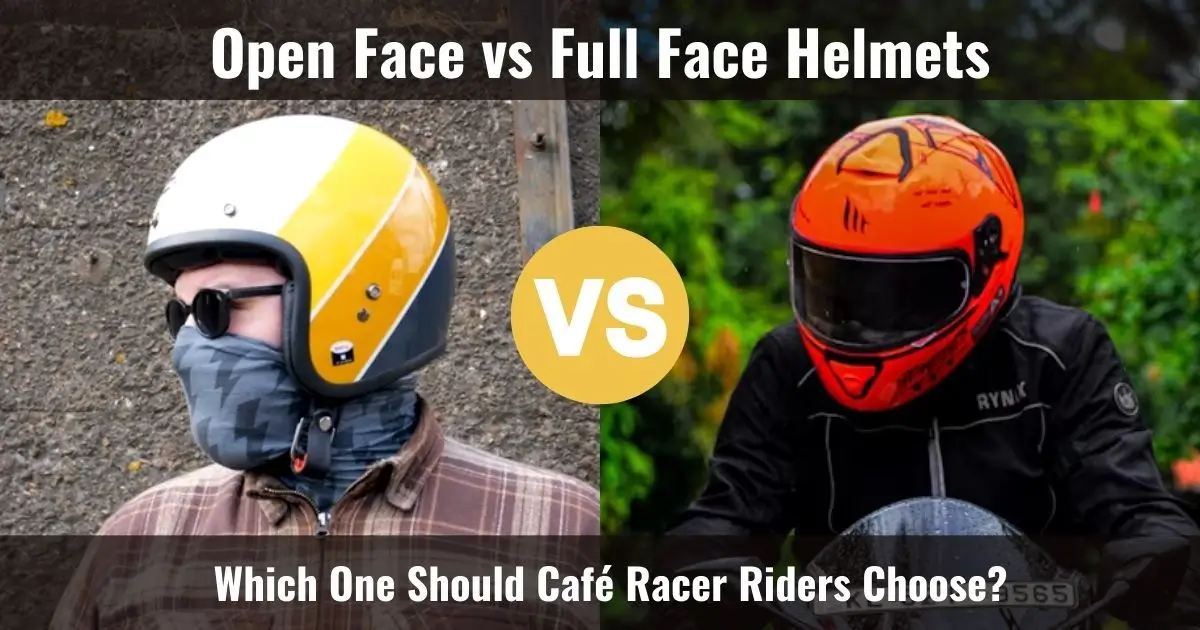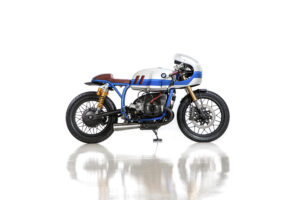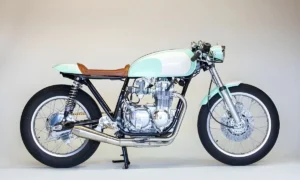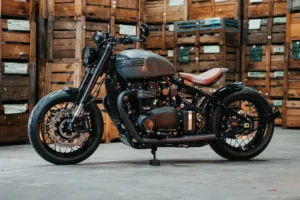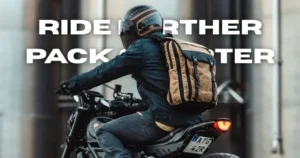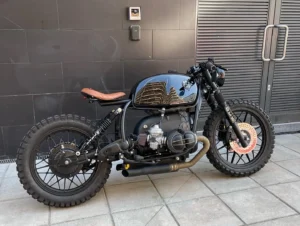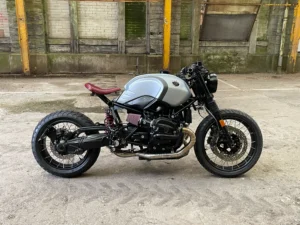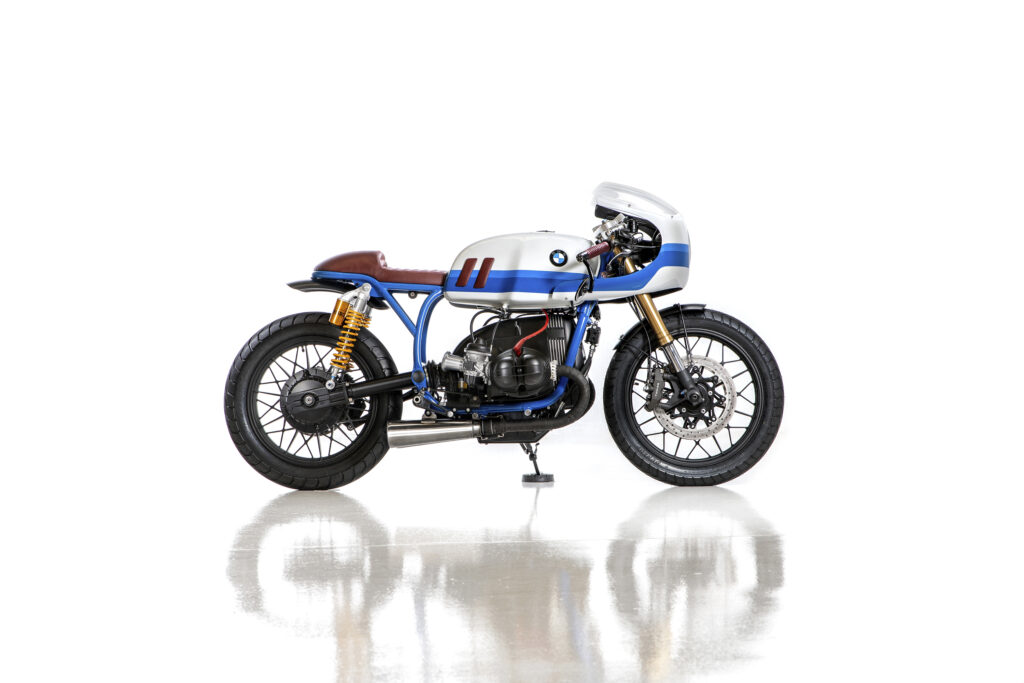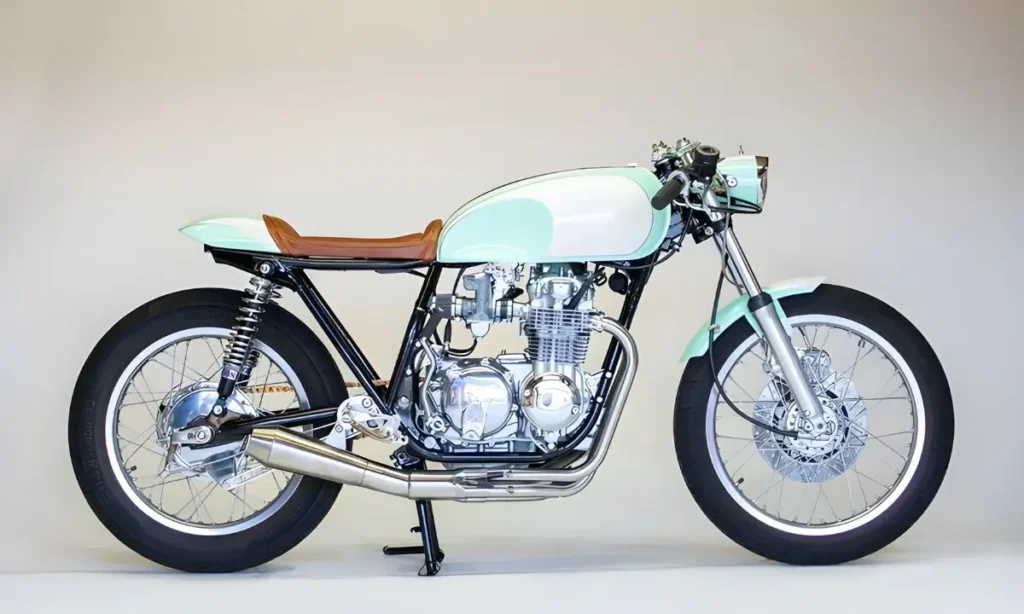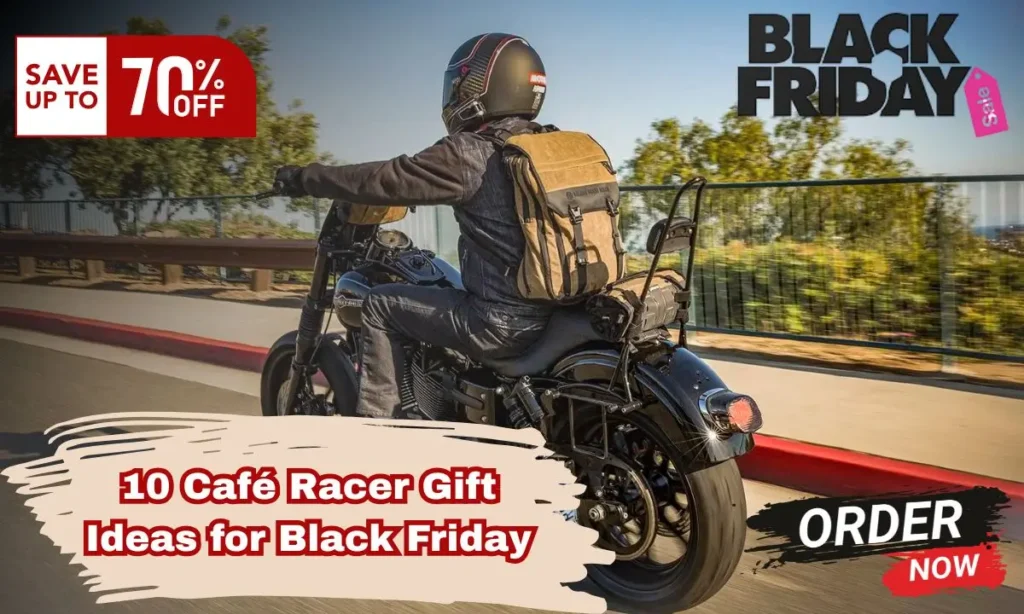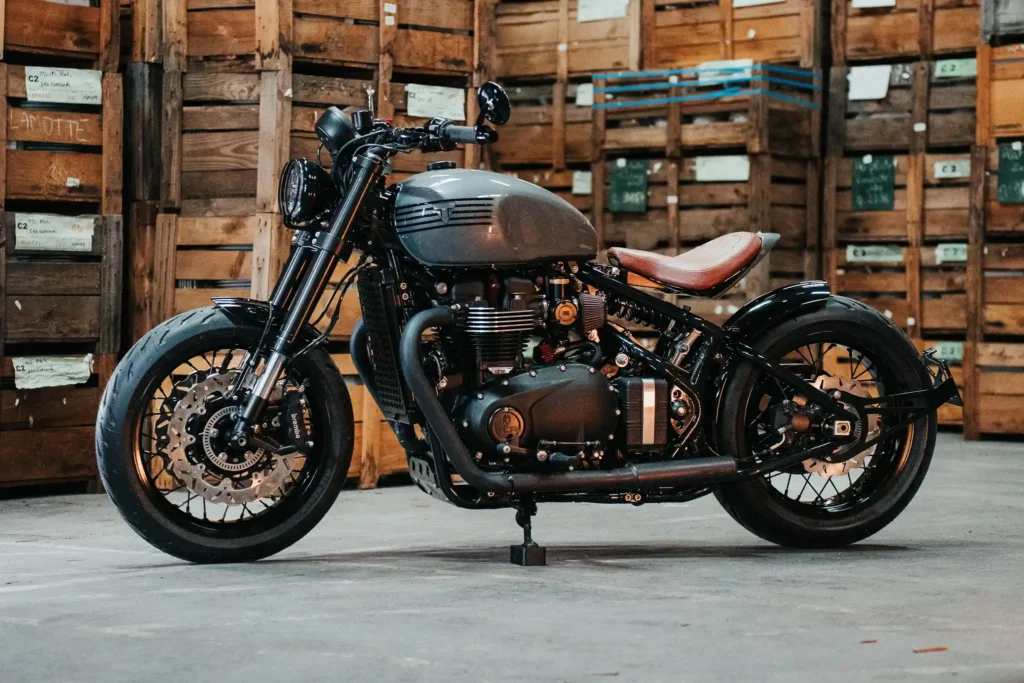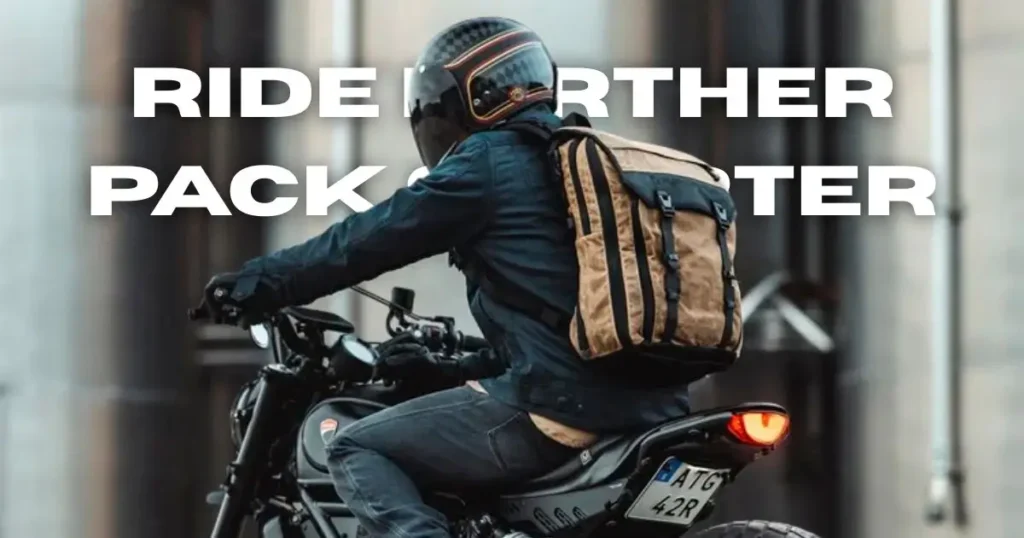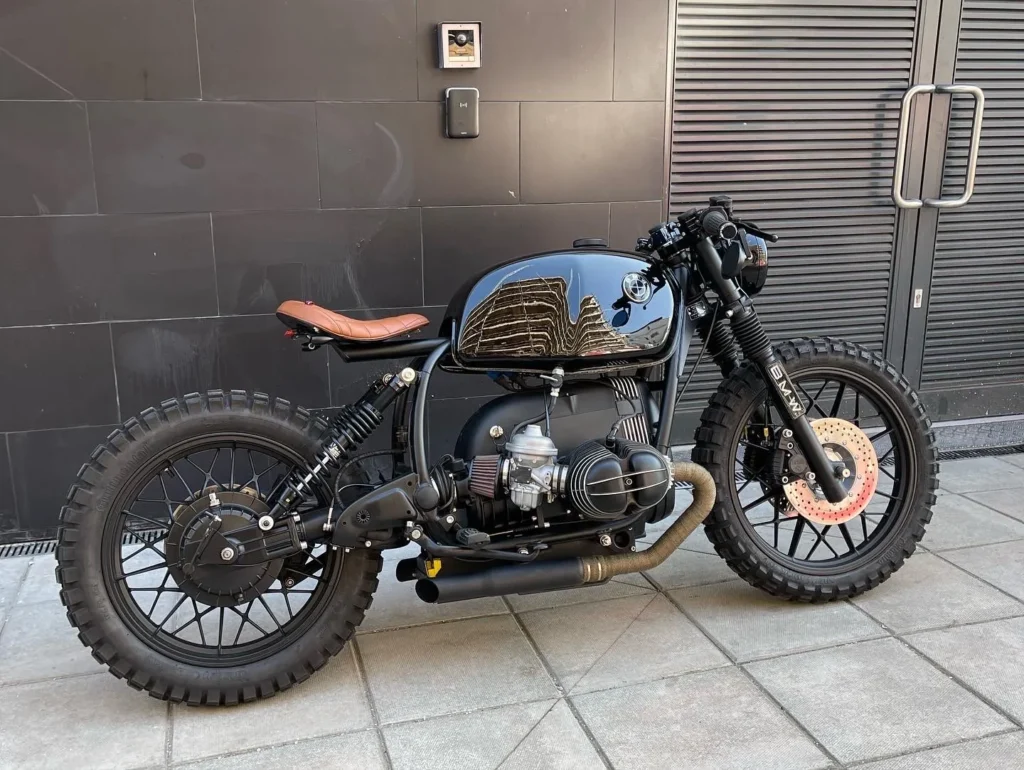Table of Contents
ToggleA helmet is one of the most important parts of a rider’s gear. It protects the head in case of accidents and gives confidence on the road. For café racer riders, the helmet also adds to the overall look and riding experience. Two common helmet types are open face and full face. Each one offers different benefits. Each fits a different kind of rider.
This article explains the differences clearly. It focuses on safety, comfort, and style. You will learn how each helmet works in real situations. This helps you choose the right one for your café racer rides.
What Are Open Face Helmets?
An open face helmet covers the top, sides, and back of the head. It leaves the face fully open. This type is also called a three-quarter helmet. Many café racer riders like it for its classic look. It fits well with vintage bikes and gives a stylish appearance on the road.
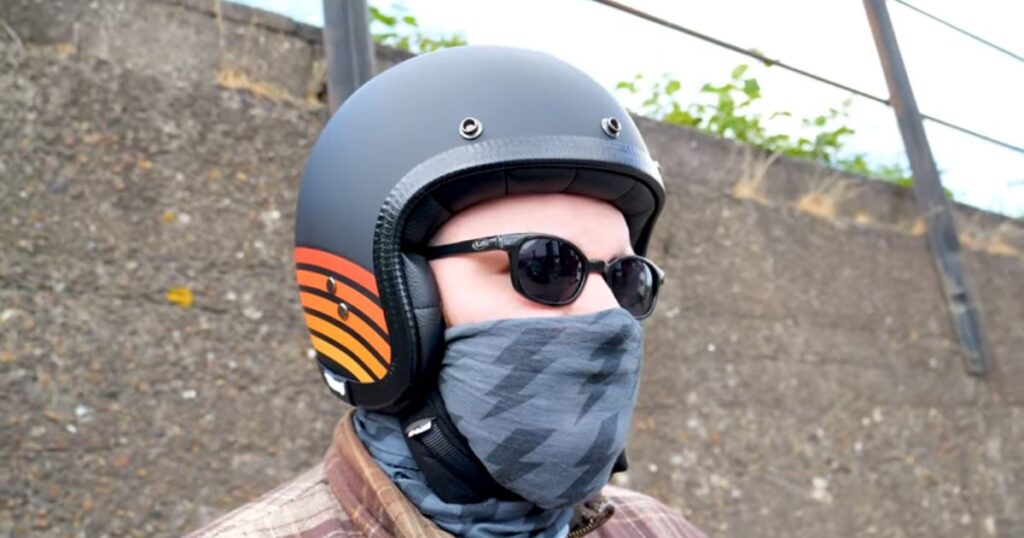
One of the main benefits is visibility. Riders get a wide, clear view of their surroundings. This helps in city traffic and short rides. Open face helmets also feel light and comfortable. Airflow is high, which keeps the rider cool during warm weather.
However, this helmet does not protect the chin or face. In a crash, the lower part of the face remains exposed. Riders must be careful with speed and road conditions. Some use goggles or visors to block wind and dust. These add comfort but not full protection.
Open face helmets work best for low-speed rides and short distances. They suit those who value style, open air, and a close connection to the road.
What Are Full Face Helmets?
A full face helmet covers the entire head, including the chin and face. It has a solid shell with a built-in visor. This design offers complete head protection. It is the safest type of helmet for all kinds of riders, including café racer owners.
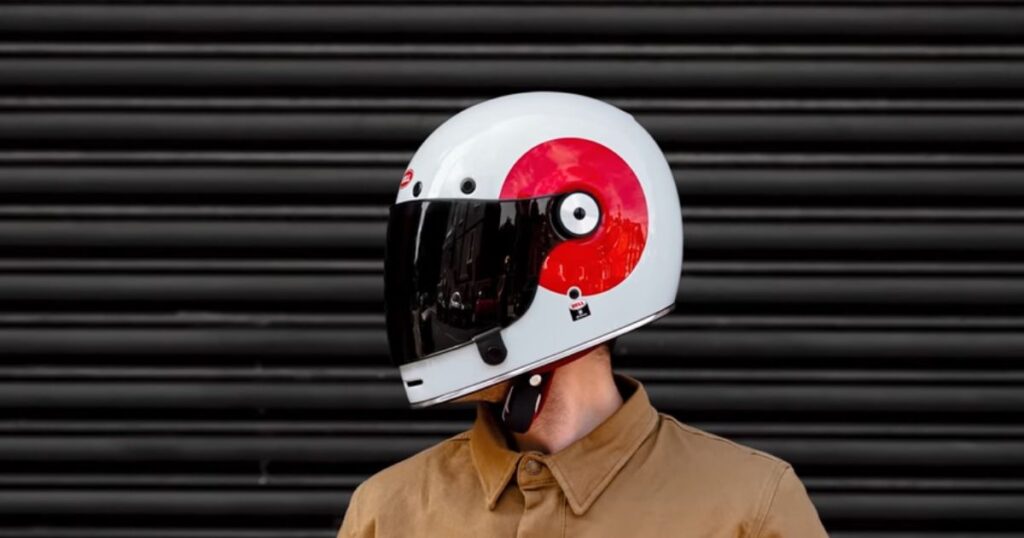
One of its main advantages is impact protection. The chin bar guards the lower face, which is often injured in crashes. The visor also protects the eyes from wind, dust, and insects. Riders feel more secure at high speeds and in harsh weather. The helmet reduces wind noise and keeps the ride more stable.
Full face helmets are heavier than open face ones. They may feel warmer in hot weather. Some riders think they do not match the café racer look. The design is modern and may not suit vintage builds. However, many brands now offer retro-style full face helmets for classic bikes.
This helmet is ideal for long rides, highway use, and fast city travel. It is the best option for those who want full protection without giving up comfort.
Open Face vs Full Face: A Detailed Comparison
Open face and full face helmets serve different riding needs. Each design offers a unique balance of protection, comfort, and style. Riders must assess how these factors match their daily routes, riding speeds, and personal preferences. The right choice depends on use, not trend.

Safety
Full face helmets provide complete head coverage. They shield the chin, jaw, and face during crashes. The solid outer shell and visor reduce injury risk from impact, debris, or wind. Open face helmets lack this facial protection. The chin and mouth stay exposed. For high-speed riding or daily commutes, a full face helmet gives stronger and more consistent protection. Always choose certified helmets with labels like ECE, DOT, or Snell to ensure safety standards are met.
Comfort
Open face helmets feel lighter and cooler. Air flows freely, making them ideal for short rides and warm weather. They are simple to put on and remove. Full face helmets are heavier but more stable. Most modern models include vents to improve airflow. They also reduce wind noise, which lowers fatigue during long-distance rides. Riders who spend more time on the road may find full face helmets more relaxing over time.
Style
Open face helmets are popular among café racer riders for their vintage shape and minimalist design. They blend well with retro motorcycles and custom builds. Full face helmets often look modern, but several brands now design retro-styled full face models. These offer the same classic feel without compromising safety. Riders can now match looks and function more easily than before.
Practical Use
Open face helmets perform best in calm, low-speed settings. They are convenient for city trips and short rides. However, they are not ideal for harsh weather or high-speed travel. Full face helmets handle longer routes and variable conditions better. They provide full coverage, block cold wind, and increase riding confidence. For riders who often travel longer distances or ride on highways, a full face helmet is a more dependable option.
Helmet Comparison Table
| Feature | Open Face Helmet | Full Face Helmet |
| Coverage | Top, sides, back of head | Full head including chin and face |
| Safety Level | Moderate (face exposed) | High (full coverage) |
| Comfort | Light, cool, more airflow | Quiet, stable, protected from wind |
| Style Match | Classic, vintage café racer look | Modern or retro-styled café builds |
| Best Use | Short rides, city traffic, casual use | Long rides, highway, daily commuting |
| Protection Rating | ECE/DOT certified models recommended | ECE/DOT/Snell certified for max safety |
Which Helmet Is Better: Open Face or Full Face?
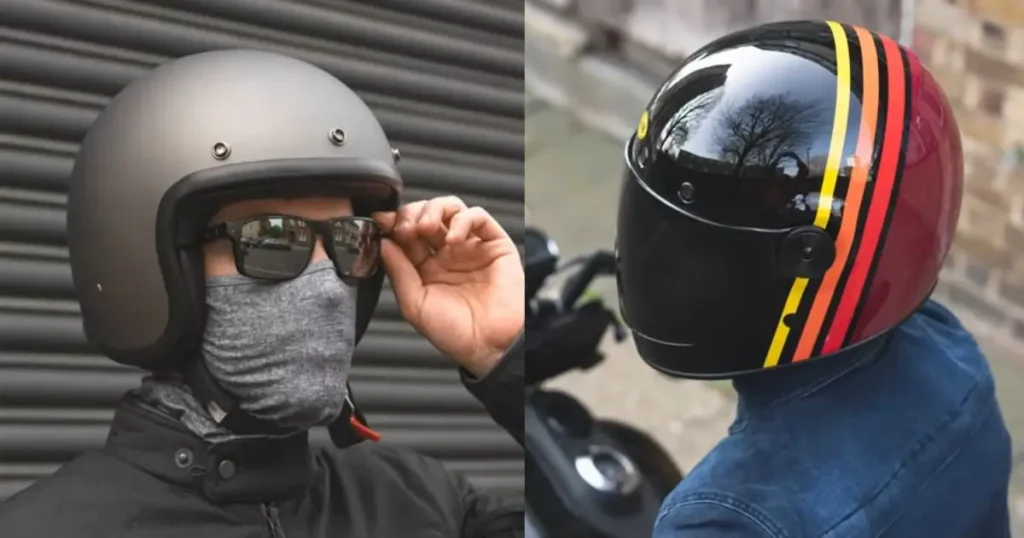
The right helmet depends on how you ride, where you ride, and what matters most to you. If safety is your top priority, a full face helmet is the clear choice. It gives the most protection in every condition. It guards your chin, face, and jaw. It also blocks wind and noise. This makes it perfect for daily use, fast rides, and long-distance travel.
If you ride at low speeds in safe, city areas and care more about style, then an open face helmet can work. It matches café racer design and feels light and open. But you must accept the lower level of face protection. You must also wear eye protection like goggles or visors. It suits casual riders who value comfort, airflow, and retro appearance over complete safety.
Your decision should match your riding habits. If you use your bike often and ride fast, choose a full face helmet. If you ride less, go slow, and focus on looks, an open face helmet may be enough. But never ignore certification. No matter which type you choose, make sure the helmet is tested, approved, and fits your head correctly. Safety should never be guessed. It should be guaranteed.
To find top-rated and certified helmets for café racers, read our guide to the best café racer helmets.
Final Thoughts
Both open face and full face helmets offer real value for café racer riders. Each helmet type serves a different purpose. One focuses on airflow and style. The other gives maximum protection and better coverage. What you choose should match how and where you ride.
Open face helmets are light, simple, and stylish. They fit the café racer look well. But they leave the face open. That makes them less safe in certain conditions. Full face helmets cover the entire head. They protect you better in a crash. They also reduce wind and noise at higher speeds.
A helmet is not only a part of your gear. It is a tool for safety and comfort. Always choose one that fits your needs, your bike, and your riding pattern. And always check that it meets official safety standards. Riding with the right helmet protects your life. That choice is personal, but the safety it gives is clear.
FAQs
What does ECE certified mean for motorcycle helmets?
ECE certification means the helmet meets safety standards set by the Economic Commission for Europe. It is used in over 50 countries and ensures strong impact protection and quality testing.
What is the difference between DOT and Snell certification?
DOT is a U.S. government safety standard. Snell is a private, non-profit standard with more advanced testing. Snell-certified helmets often go through higher impact and quality tests than DOT.
Are retro-style full face helmets as safe as modern designs?
Yes, if they meet safety certifications like ECE, DOT, or Snell. Retro helmets use vintage design but modern materials and safety features.
How do I know if a helmet fits properly?
A proper fit means the helmet sits snug on all sides of your head without causing pressure. It should not move when you shake your head. The strap should also stay firm under the chin.
Can I use a tinted visor with a full face helmet?
Yes, many full face helmets come with removable or switchable visors. Tinted visors reduce glare during daytime riding but should not be used at night.
Is an open face helmet legal for highway riding?
Laws vary by country and region, but most allow open face helmets if they are certified. However, some areas recommend full face helmets for highway use due to higher risk.
What is a modular helmet, and is it good for café racers?
A modular helmet has a flip-up front that combines features of open and full face helmets. While functional, its bulky shape is less common in café racer style.
What is a helmet shell made from?
Helmet shells are usually made from polycarbonate, fiberglass, or carbon fiber. Each material offers different levels of strength, weight, and cost.
How often should I replace my motorcycle helmet?
Most experts recommend replacing a helmet every 5 years or after any crash, even if no damage is visible. The internal foam and shell degrade over time.
Do café racer helmets come with Bluetooth or speaker options?
Some modern retro-style helmets include built-in speaker cutouts or are compatible with Bluetooth communication systems. Always check the product specs before buying.

